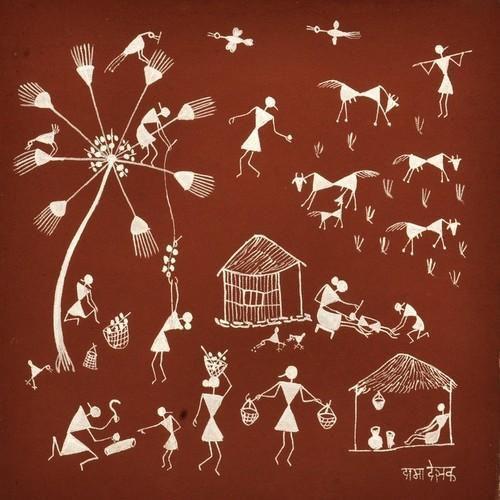Phad Painting
- CAMI Info
- Dec 1, 2021
- 3 min read
Updated: Jul 6, 2022
In India, we have a beautiful talent for telling stories through our art forms. Phad Paintings are one of the folk art forms where you will see a part of traditions. We all know that every art form has its own history and uniqueness which makes paintings a very important part of our life. Art museums in India today help you to bring out the creativity while you learn more about traditional art with Children’s art museum of India.

What is Phad Painting?
Phad has its origins in Shahpura, near Bhilwara, Rajasthan, and has been passed down through generations within a single-family. Phad is a style of scroll art that tells detailed religious stories about local gods and deities.
The Phad style of painting is a combination of Rajput and Mughal techniques. Pabuji's phads are roughly 15 feet long, whereas Devnarayan's phads are around 30 feet long.
These traditional paintings were carried by priest-singers of the Rabari tribe, known as Bhopas and Bhopis, who would sing and perform stories of their local deities - Devnarayanji (a reincarnation of Vishnu) and Pabuji (a reincarnation of Vishnu) (a local hero). After sunset, the Phad artwork would be unrolled, or unfolded, for a performance in front of village members that would last all night. This could explain why the paintings are termed 'Phad,' which in the local dialect means 'fold.'
Making of Phad Paintings
How to prepare the canvas -
A long piece of handspun and handwoven cloth is purchased by the artist. The material is then starched, stretched, and dried in direct sunshine to guarantee that no folds remain in the fabric. The cloth is next burnished to make it smooth and ready for delicate burnishing. It will not absorb any pigment after burnishing.
Color Mixing
Yellow orpiment is used to make light yellow. It's where you'll draw all of the people and structures.
Red lead oxide (Sindur) is mixed with yellow powder to make the orange or saffron colour used to paint faces and flesh (Orpimat-Hartal).
Verdigris (Jangal), a copper acetate, is used to make green.
Brown is available in powder form in the market.
Vermilion/Red is made by crushing cinnabar pieces (mercury sulphide ore).
Blue (Indigo) is a color that may be purchased commercially.
The details of all figures are outlined in black (Kala, Syahi). It's manufactured by burning coconut shells or collecting lampblack from the burning of edible oil.
Applying Colours
Following the mapping, the color application process begins. Each color is applied one by one from its bowl to all of the locations where it appears in the artwork.
Filling in faces is the first step in coloring (mundo bharno). The artist carefully allows space for eyes and maintains ideal body proportions when applying this saffron color. Yellow, green, brown, and red are applied one by one, with the lighter colors applied first and used. With each application, the artist gradually changes the borders between other colors and the background by using darker colors. The figures' shape is improved in this way.
Outline Creation
Applying the black outline is the most time-consuming procedure. The black outline is completed, and the black and blue surfaces are filled in, which takes days due to the level of detail necessary for each figure.
The painter finishes the phad on a lucky day. In the center area of the scroll, where the largest figure of Devnarayan/or Pabuji is drawn, the artist marks. He signs his name, as well as the names of the Bhopa and patrons, as well as their addresses and the date.
Final Thoughts
Art is a part of our life, heritage, and culture. Ancient art not only holds the essence of old times but also gives us a chance to learn more about the art of the present. Children’s art museum of India gives your child or you a chance to showcase your talent and emotions in the form of art by online art submission.
Join us today to learn and present your art to the world or if you want to know more about the various art forms, check out this space!




Comments